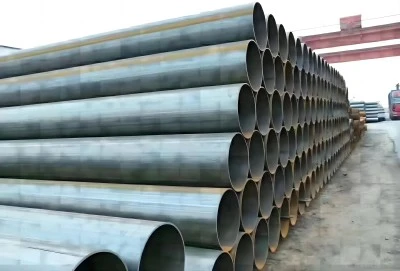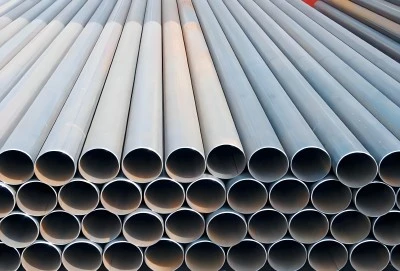EN10210 pipe, a European standard for hot-finished structural hollow sections, differs significantly from ASTM pipes, which follow American standards. These differences encompass material properties, manufacturing processes, and application suitability. By exploring these variations, engineers and project managers can make informed decisions on which type of steel pipe best suits their specific needs in global markets, particularly in regions like the Middle East, Australia, and Southeast Asia.
|
|
|
Key Material Properties: EN10210 vs ASTM
Chemical composition: EN10210 vs ASTM standards
The chemical composition of steel pipes plays a vital role in determining their performance and suitability for various applications. EN10210 and ASTM standards have distinct requirements for the chemical makeup of their respective steel pipes. EN10210 pipes typically have stricter limits on certain elements, such as phosphorus and sulfur, which can affect the pipe's weldability and corrosion resistance. ASTM standards, on the other hand, may allow for a broader range of chemical compositions depending on the specific grade and intended use of the pipe.
For instance, EN10210 grade S355J2H requires a maximum carbon content of 0.22%, while ASTM A500 Grade B allows up to 0.26%. This difference can impact the pipe's strength and formability. Additionally, EN10210 pipes often have tighter controls on nitrogen content, which can influence the steel's toughness and aging characteristics.
Mechanical properties: Strength and ductility comparison
Mechanical properties are crucial factors in selecting the right steel pipe for structural applications. EN10210 and ASTM pipes exhibit differences in their strength and ductility characteristics. EN10210 pipes generally offer higher yield and tensile strengths compared to their ASTM counterparts. For example, EN10210 S355J2H has a minimum yield strength of 355 MPa, while ASTM A500 Grade B requires a minimum of 290 MPa.
Ductility, which affects a pipe's ability to deform without fracturing, also varies between the two standards. EN10210 pipes often demonstrate superior elongation properties, allowing for better performance in applications that involve bending or forming. This increased ductility can be particularly beneficial in seismic-resistant structures or in offshore platform construction where flexibility is essential.
Dimensional tolerances: EN10210 and ASTM specifications
Dimensional tolerances are critical for ensuring proper fit and performance in various applications. EN10210 and ASTM standards have different specifications for tolerances on outside diameter, wall thickness, and length. EN10210 typically has tighter tolerances, especially for wall thickness, which can be crucial in pressure-bearing applications like oil and gas pipelines.
For instance, EN10210 allows a maximum deviation of ±10% on wall thickness for pipes with a nominal wall thickness of 5 mm or less, while ASTM A500 permits a variation of ±10% with no minimum wall thickness specified. These differences in tolerances can impact the final weight and strength of the pipe, as well as its suitability for certain joining methods and fittings.
Manufacturing Process: European vs American Standards
Hot-finished vs cold-formed: EN10210 and ASTM approachesThe manufacturing process significantly influences the properties and performance of steel pipes. EN10210 pipes are exclusively hot-finished, meaning they are formed at high temperatures and allowed to cool naturally. This process results in a more uniform microstructure and reduces residual stresses in the material. Hot-finishing also allows for thicker wall sections and larger sizes, making EN10210 pipes suitable for heavy-duty applications in the oil and gas industry and large-scale construction projects.
ASTM standards, however, encompass both hot-finished and cold-formed pipes. Cold-formed ASTM pipes are shaped at room temperature, which can lead to work hardening and increased strength but may also introduce residual stresses. These pipes are often used in lighter structural applications or where tighter dimensional control is required. The choice between hot-finished and cold-formed pipes can impact factors such as weldability, formability, and overall structural integrity.
Welding techniques: ERW and LSAW in EN10210 and ASTM pipes
Welding techniques play a crucial role in the production of steel pipes, affecting their strength and reliability. EN10210 pipes are typically produced using seamless or high-frequency induction (HFI) welding methods. The HFI process creates a strong, consistent weld that is particularly suitable for high-pressure applications in the oil and gas sector. ASTM pipes, on the other hand, may be produced using a variety of welding techniques, including electric resistance welding (ERW) and longitudinal submerged arc welding (LSAW).
The choice of welding technique can impact the pipe's performance in different environments. For instance, LSAW pipes often have superior weld strength and are preferred for large-diameter, high-pressure pipelines. ERW pipes, while generally more cost-effective, may have limitations in certain high-stress applications. Understanding these differences is crucial for project procurement managers and plant equipment managers when selecting pipes for specific projects.
Quality control: European and American inspection methods
Quality control measures ensure the reliability and consistency of steel pipes. EN10210 and ASTM standards have different approaches to inspection and testing. EN10210 pipes typically undergo more rigorous non-destructive testing, including 100% ultrasonic inspection for seamless pipes and full-body hydrostatic testing for welded pipes. These stringent quality control measures contribute to the high reliability of EN10210 pipes in critical applications.
ASTM standards also require comprehensive testing, but the specific requirements may vary depending on the grade and intended use of the pipe. For example, ASTM A53 pipes used in the water supply system may have different inspection criteria compared to ASTM A106 pipes used in high-temperature service. The differences in quality control procedures can influence the overall consistency and reliability of the pipes, which is a crucial consideration for large-scale engineering projects.
Application Guide: Choosing Between EN10210 and ASTM
Oil and gas industry: EN10210 vs ASTM pipe performanceIn the oil and gas industry, the choice between EN10210 and ASTM pipes can significantly impact project outcomes. EN10210 pipes, with their consistent material properties and strict quality control, are often preferred for offshore platforms and high-pressure pipelines. Their superior strength and corrosion resistance make them suitable for harsh environments encountered in oil and gas extraction.
ASTM pipes, while also widely used in the industry, may be more commonly found in onshore applications or in less demanding environments. The specific grade of ASTM pipe, such as API 5L for oil and gas pipelines, can offer comparable performance to EN10210 pipes in certain applications. Project managers must carefully consider factors such as operating pressures, temperature ranges, and environmental conditions when selecting between EN10210 and ASTM pipes for oil and gas projects.
Construction sector: Structural applications of EN10210 and ASTM
In the construction sector, both EN10210 and ASTM pipes have their place in structural applications. EN10210 pipes are often chosen for large-scale projects that require high strength-to-weight ratios, such as bridges and high-rise buildings. Their consistent mechanical properties and tight dimensional tolerances make them ideal for precise structural designs.
ASTM pipes, particularly cold-formed varieties, are frequently used in lighter structural applications or where cost-effectiveness is a primary concern. The choice between EN10210 and ASTM pipes in construction often depends on factors such as load-bearing requirements, aesthetic considerations, and local building codes. Structural engineers must weigh these factors carefully to ensure the optimal balance of performance and cost in their designs.
Global market trends: EN10210 and ASTM pipe demand
Global market trends show varying demand patterns for EN10210 and ASTM pipes across different regions. In Europe and increasingly in the Middle East, EN10210 pipes are often the preferred choice for large infrastructure projects and oil and gas applications. The stringent standards and consistent quality of EN10210 pipes align well with the demanding requirements of these markets.
In North America and parts of Asia, ASTM pipes continue to dominate many sectors due to familiarity with the standards and established supply chains. However, as global projects become more interconnected, there's a growing trend towards harmonization of standards. This shift is leading to increased acceptance of EN10210 pipes in traditionally ASTM-dominated markets, particularly for specialized applications in the oil and gas sector and high-performance structural projects.
The choice between EN10210 and ASTM steel pipes depends on various factors, including project requirements, regional preferences, and specific application needs. EN10210 pipes offer advantages in terms of consistency, strength, and quality control, making them ideal for demanding applications in oil and gas, offshore construction, and large-scale infrastructure projects. ASTM pipes, with their wider range of grades and manufacturing processes, provide flexibility and cost-effectiveness for a broad spectrum of applications. As global markets continue to evolve, understanding the nuances between these standards becomes increasingly important for engineers, project managers, and procurement professionals in making informed decisions that optimize performance, safety, and cost-effectiveness in their projects.
EN10210 and ASTM Steel Pipes For Sale
For high-quality EN10210 pipes and ASTM steel pipes, look no further than Hebei Longma Group. With advanced production equipment imported from Germany and independently developed technologies, Hebei Longma ensures top-notch product quality. Their professional team of over 300 employees, including 60+ technical experts, guarantees expertise in pipe manufacturing. Comprehensive testing facilities, including ultrasonic flaw detectors and X-ray inspection equipment, ensure product reliability. Hebei Longma offers fast delivery, with standard thickness pipes ready in as little as 7 days. They hold complete certifications, including API 5L, ISO 9001, and ISO 14001. Thanks to stable raw material partnerships and efficient production, Hebei Longma provides competitive pricing without compromising quality. For more information, contact us at info@longma-group.com.














